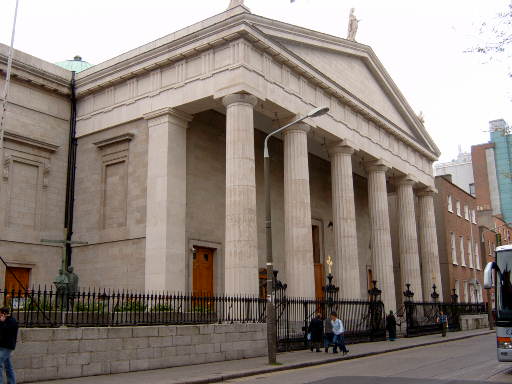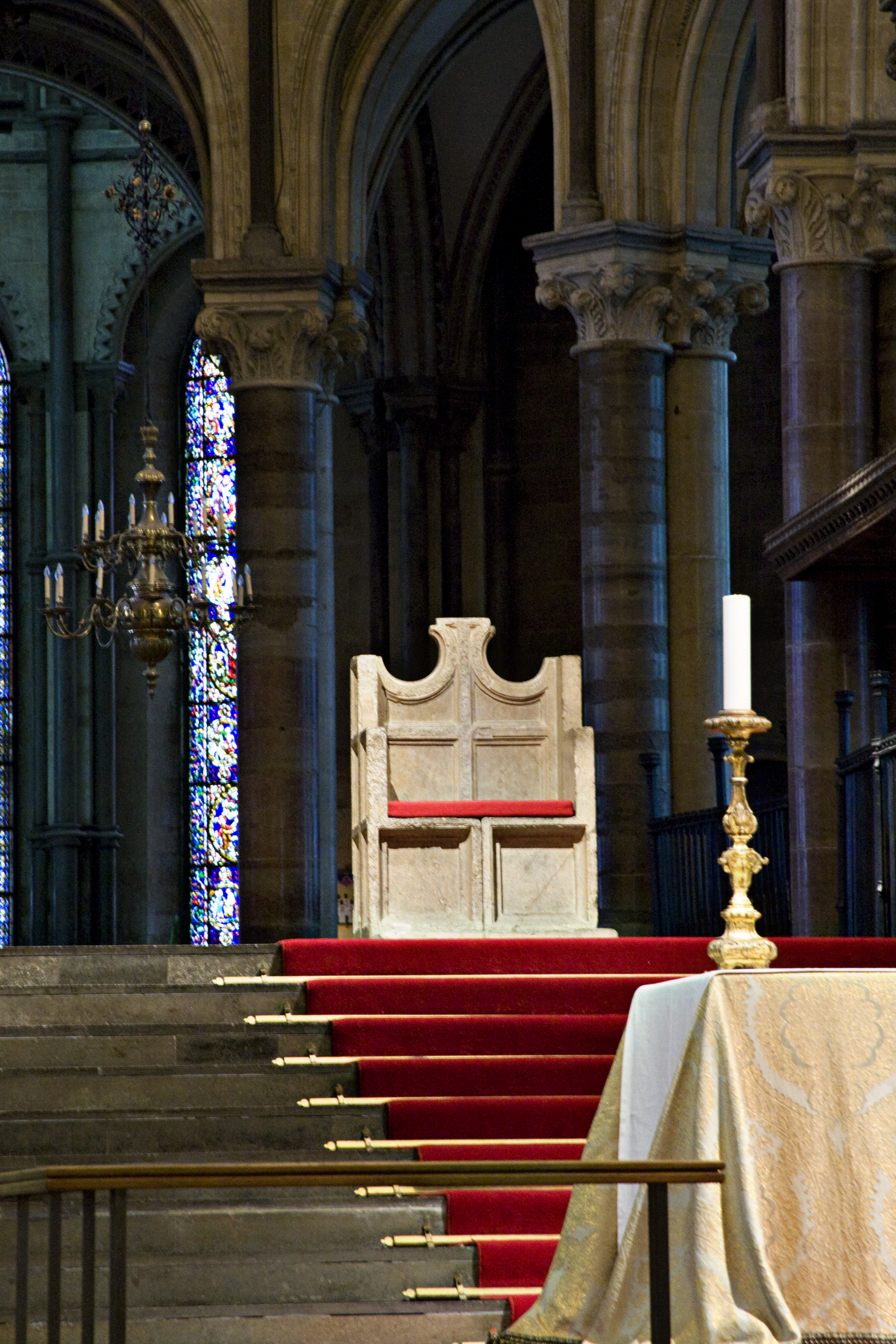|
Catholic Archbishop Of Dublin
The Archbishop of Dublin () is the head of the Archdiocese of Dublin (Roman Catholic), Archdiocese of Dublin in the Catholic Church, responsible for its spiritual and administrative needs. The office has existed since 1152, in succession to a regular bishopric (subject to Canterbury, and within the wider jurisdiction of Glendalough) since 1028. The archdiocese is the metropolitan bishop, metropolitan see of the ecclesiastical province of List of Catholic dioceses in Ireland#Ecclesiastical province of Dublin, Dublin, and the archbishop is also styled the ''Primate of Ireland''. The cathedral church of the archdiocese is Saint Mary's Pro-Cathedral in Dublin city, although the Church formally claims Christ Church Cathedral, Dublin, Christ Church as its cathedral, and the archbishop's residence is Archbishop's House in Drumcondra, Dublin, Drumcondra. As of 2022, the incumbent Ordinary (church officer)#Catholic usage, ordinary is Dermot Farrell, who was installed on 2 February 2021. ... [...More Info...] [...Related Items...] OR: [Wikipedia] [Google] [Baidu] |
Dermot Farrell
Dermot Pius Farrell KC*HS (born 22 November 1954) is an Irish Roman Catholic prelate who has served as Archbishop of Dublin since 2021. Early life and education Farrell was born in Garthy, Castletown Geoghegan, County Westmeath, on 22 November 1954, the eldest of seven children to Dermot and Carmel Farrell. He was baptised in the Cathedral of Christ the King, Mullingar, and attended primary school in Castletown Geoghegan and Streamstown and secondary school at St Finian's College, Mullingar. Farrell began studying for the priesthood at St Patrick's College, Maynooth, in 1972, completing a Bachelor of Science in mathematics and physics from the National University of Ireland, Maynooth in 1976 and a Bachelor of Divinity from the Pontifical University in 1979. He was ordained a priest for the Diocese of Meath on 7 June 1980. Presbyteral ministry Following ordination, Farrell's first pastoral assignment was as a curate in the cathedral parish of Mullingar between 1981 an ... [...More Info...] [...Related Items...] OR: [Wikipedia] [Google] [Baidu] |
Ordinary (church Officer)
An ordinary (from Latin ''ordinarius'') is an officer of a church or civic authority who by reason of office has ordinary power to execute laws. Such officers are found in hierarchically organised churches of Western Christianity which have an ecclesiastical legal system.See, e.g.c. 134 § 1 ''Code of Canon Law'', 1983 For example, diocesan bishops are ordinaries in the Catholic Church and the Church of England. In Eastern Christianity, a corresponding officer is called a hierarch (from Greek ''hierarkhēs'' "president of sacred rites, high-priest" which comes in turn from τὰ ἱερά ''ta hiera'', "the sacred rites" and ἄρχω ''arkhō'', "I rule"). Ordinary power In canon law, the power to govern the church is divided into the power to make laws (legislative), enforce the laws (executive), and to judge based on the law (judicial). An official exercises power to govern either because he holds an office to which the law grants governing power or because someone wit ... [...More Info...] [...Related Items...] OR: [Wikipedia] [Google] [Baidu] |
Canterbury Cathedral
Canterbury Cathedral is the cathedral of the archbishop of Canterbury, the spiritual leader of the Church of England and symbolic leader of the worldwide Anglican Communion. Located in Canterbury, Kent, it is one of the oldest Christianity, Christian structures in England and forms part of a World Heritage Site. Its formal title is the Cathedral and Metropolitical Church of Christ, Canterbury. Founded in 597, the cathedral was completely rebuilt between 1070 and 1077. The east end was greatly enlarged at the beginning of the 12th century, and largely rebuilt in the Gothic style following a fire in 1174, with significant eastward extensions to accommodate the flow of pilgrims visiting the shrine of Thomas Becket, the archbishop who was murdered in the cathedral in 1170. The Norman nave and transepts survived until the late 14th century, when they were demolished to make way for the present structures. Before the English Reformation, the cathedral was part of a Benedictine monas ... [...More Info...] [...Related Items...] OR: [Wikipedia] [Google] [Baidu] |
Sigtrygg Silkbeard
Sigtrygg II Silkbeard Olafsson (also Sihtric, SitricÓ Corráin, p. 123 and Sitrick in Irish texts; or SigtrygWinn, p. 46 and SigtryggrMac Manus, p. 278 in Scandinavian texts) was a Hiberno-Norse king of Dublin (possibly AD 989–994; restored or began 995–1000; restored 1000 and abdicated 1036) of the Uí Ímair dynasty. He was caught up in the abortive Leinster revolt of 999–1000, after which he was forced to submit to the King of Munster, Brian Boru. His family also conducted a double-marriage alliance with Boru, although he later realigned himself with the main leaders of the Leinster revolt of 1012–1014. He has a prominent role in the 12th-century Irish medieval text '' Cogadh Gaedhil re Gallaibh'' and the 13th-century Icelandic '' Njal's Saga'', as the main Norse leader at the Battle of Clontarf (1014). Sigtrygg's long reign spanned 46 years, until his abdication in 1036.Hudson, p. 83 During that period, his armies saw action in four of the five Irish provi ... [...More Info...] [...Related Items...] OR: [Wikipedia] [Google] [Baidu] |
Gofraid Mac Sitriuc
Gofraid mac Sitriuc (died 951), in Old Norse Guðrøðr Sigtryggsson , was King of Dublin. He was the son of Sihtric ua Ímair and a great-grandson of Ímar, founder of the Uí Ímair kindred which dominated much of the Norse-Gael and Scandinavianised parts of Britain and Ireland in the 10th century. Gofraid became ruler of Dublin on the death of his cousin Blácaire mac Gofrith in a battle against Congalach mac Máel Mithig, the High King of Ireland, in 948. The men of Dublin suffered heavy losses in this battle, over a thousand being killed or captured. An even bloodier defeat followed in 950 when Gofraid allied with Congalach against the would-be High King Ruaidrí ua Canannáin. Gofraid attacked Ruaidrí at an unidentified place called ''Móin Brocaín'', somewhere between the River Boyne and the River Liffey, on 30 November 950. Although Ruaidrí and one of his sons were killed in the battle, Gofraid was heavily defeated and fled. The ''Annals of Ulster'' say that some ... [...More Info...] [...Related Items...] OR: [Wikipedia] [Google] [Baidu] |
Sihtric Cáech
Sihtric or Sitric is an Anglo-Saxon personal name that is cognate with the Old Norse Sigtrygg. People called Sihtric or Sitric, include: * Sitric Cáech (died 927), ruler of Dublin and then Viking Northumbria in the early 10th century * Sitric II of Northumbria (fl. c. 942), ruler of Northumbria in the 10th century * Sihtric (Abbot of Tavistock) (died 1082), Anglo-Saxon clergyman *Sitric the Dane, an 11th-century ruler of Waterford *Sitric mac Ualgairg, king of Breifne 1256/7 {{hndis ... [...More Info...] [...Related Items...] OR: [Wikipedia] [Google] [Baidu] |
Norsemen
The Norsemen (or Northmen) were a cultural group in the Early Middle Ages, originating among speakers of Old Norse in Scandinavia. During the late eighth century, Scandinavians embarked on a Viking expansion, large-scale expansion in all directions, giving rise to the Viking Age. In English-language scholarship since the 19th century, Norse seafaring traders, settlers and warriors have commonly been referred to as Vikings. Historians of Anglo-Saxon England often use the term "Norse" in a different sense, distinguishing between Norse Vikings (Norsemen) from Norway, who mainly invaded and occupied the islands north and north-west of Britain as well as Ireland and western Britain, and Danish Vikings, who principally invaded and occupied eastern Britain. History of the terms ''Norseman'' and ''Northman'' The word ''Norseman'' first appears in English during the early 19th century: the earliest attestation given in the third edition of the ''Oxford English Dictionary'' is from ... [...More Info...] [...Related Items...] OR: [Wikipedia] [Google] [Baidu] |
Tallaght
Tallaght ( ; , ) is a southwestern outer suburb of Dublin, Ireland. The central village area was the site of a monastic settlement from at least the 8th century, which became one of medieval Ireland's more important monastic centres. Up to the 1960s, Tallaght was a small village in the old County Dublin, linked to several nearby rural areas which were part of the large civil parish of the same name—the local council estimates the population then to be 2,500.Tallaght, Dublin, Ireland: County Development Plan 2004-2010, p. 78 Suburban development began in the 1970s and a "town centre" area has been developing since the late 1980s. There is no legal definition of the boundaries of Tallaght, but the 13 electoral divisions known as "Tallaght" followed by the name of a locality have, according to the 2022 census, a population of 81,022, up from 76,119 over six years. This makes Tallaght the largest settlement on the island without city status, however there have been calls in rece ... [...More Info...] [...Related Items...] OR: [Wikipedia] [Google] [Baidu] |
Swords, County Dublin
Swords ( or ) in County Dublin, the county town of the Local government in the Republic of Ireland, local government area of Fingal, is a large suburban town on the east coast of Republic of Ireland, Ireland, situated ten kilometres north of Dublin city centre. It is the eighth largest List of urban areas in the Republic of Ireland, urban area in Ireland, with a population of 40,776 as of the 2022 census of Ireland, 2022 census. The town was reputedly founded . Located on the Ward River (Ireland), Ward River, Swords features Swords Castle, a restored medieval castle, a holy well from which it takes its name, a round tower and a Norman tower. Facilities in the area include the Swords Pavilions, Pavilions shopping centre, one of the largest in the Dublin region, a range of civic offices, some light industries, the main storage facility and archive of the National Museum of Ireland and several parks. Dublin Airport is located nearby. The name "Swords" gives its name to a townland ... [...More Info...] [...Related Items...] OR: [Wikipedia] [Google] [Baidu] |
Glendalough
Glendalough (; ) is a glacial valley in County Wicklow, Ireland, renowned for an Early Medieval monastic settlement founded in the 6th century by St Kevin. From 1825 to 1957, the head of the Glendalough Valley was the site of a galena lead mine. Glendalough is also a recreational area for picnics, for walking along networks of maintained trails of varying difficulty, and also for rock climbing. History Kevin, a descendant of one of the ruling families in Leinster, studied as a boy under the care of three holy men: Eoghan, Lochan and Eanna. During this time, he went to Glendalough. He was to return later, with a small group of monks to found a monastery where the 'two rivers form a confluence'. Kevin's writings discuss his fighting "knights" at Glendalough; scholars today believe this refers to his process of self-examination and his personal temptations. His fame as a holy man spread and he attracted numerous followers. He died in about 618, traditionally on 3 June. For the ... [...More Info...] [...Related Items...] OR: [Wikipedia] [Google] [Baidu] |
Glasnevin
Glasnevin (, also known as ''Glas Naedhe'', meaning "stream of O'Naeidhe" after a local stream and an ancient chieftain) is a neighbourhood of Dublin, Ireland, situated on the River Tolka. While primarily residential, Glasnevin is also home to the National Botanic Gardens (Ireland), National Botanic Gardens, Glasnevin Cemetery, the National Meteorological Office, and a range of other state bodies, and Dublin City University has its main campus and other facilities in and near the area. Glasnevin is also a Civil parishes in Ireland, civil parish in the ancient Barony (Ireland), barony of Coolock (barony), Coolock. Geography A mainly residential neighbourhood, Glasnevin is located on the Northside (Dublin), Northside of the city of Dublin (about 3 km north of Dublin city centre). It was established on the northern bank of the River Tolka where the stream for which it may be named joins, and now extends north and south of the river. Three watercourses flow into the Tolka in ... [...More Info...] [...Related Items...] OR: [Wikipedia] [Google] [Baidu] |








